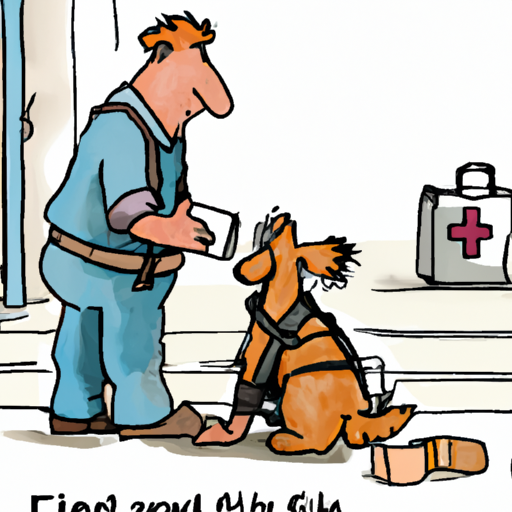Introduction
Hello, dear caregivers! You might wonder why would someone need to wrap a dog’s tail. Let’s begin with the fact that our furry friends are adventurous and energetic creatures, always ready to explore. In their adventurous escapades, they might end up hurting their wagging tails, which is where you step in. As their primary caregiver, it is essential to know how to properly wrap a tail to prevent further injury and promote healing. This guide will walk you through the process step-by-step.
H2: Understanding the Anatomy of a Dog’s Tail
Firstly, it’s important to understand the structure of a dog’s tail. It is not a simple appendage but a crucial part of their backbone that houses several vertebrae. Here’s a simple table to help illustrate:
| Parts of a Dog’s Tail | Description |
|---|---|
| Vertebrae | The tail consists of 5-23 individual tiny bones. |
| Muscles | They enable the tail to move in various directions. |
| Nerves | They relay messages from the tail to the brain. |
| Skin and Fur | They provide protection and aid in communication. |
H2: Identifying Tail Injuries
Before you proceed with wrapping the tail, it is crucial to identify the type of injury.
- Fractures: If your dog is unable to wag its tail or it hangs in an unusual position, it might be fractured.
- Cuts and Wounds: These are often visible and might bleed.
- Happy Tail Syndrome: This happens when your dog injures the tail’s end by wagging it too hard against hard surfaces.
H2: The Process of Wrapping a Tail
Now, let’s delve into the main process. Remember, it’s always best to consult a vet in case of severe injuries.
- Gather the Supplies: You would need a roll of gauze, a roll of adhesive bandage, and a pair of scissors.
- Clean the Tail: If there’s an open wound, clean it gently using warm water and mild soap. Pat dry with a clean towel.
- Apply the Gauze: Start wrapping from the base of the tail upwards, ensuring it’s not too tight.
- Secure with Adhesive Bandage: Over the gauze, wrap the adhesive bandage.
H2: Aftercare and Observations
Keep a regular eye on your dog’s tail after wrapping it.
- Monitor your dog’s behavior: If your dog is licking or biting the bandage excessively, it might be uncomfortable.
- Check the bandage: Ensure it’s not too tight and not causing any swelling.
- Change the Wrap: The wrap should be changed every couple of days or if it gets wet or dirty.
FAQ Section
Q: How can I tell if my dog’s tail is fractured?
A: If your dog is unable to move its tail or it hangs in an unusual angle, it could be fractured. Consult a vet immediately.
Q: How often should I change the wrap?
A: The wrap should be changed every couple of days or if it gets wet or dirty.
Q: What if my dog doesn’t let me touch its tail?
A: If your dog is resisting and seems in pain, it’s best to consult a vet.
Remember, when in doubt, always consult with a professional vet. Your vigilance as a caregiver can help your furry friend recover faster!



